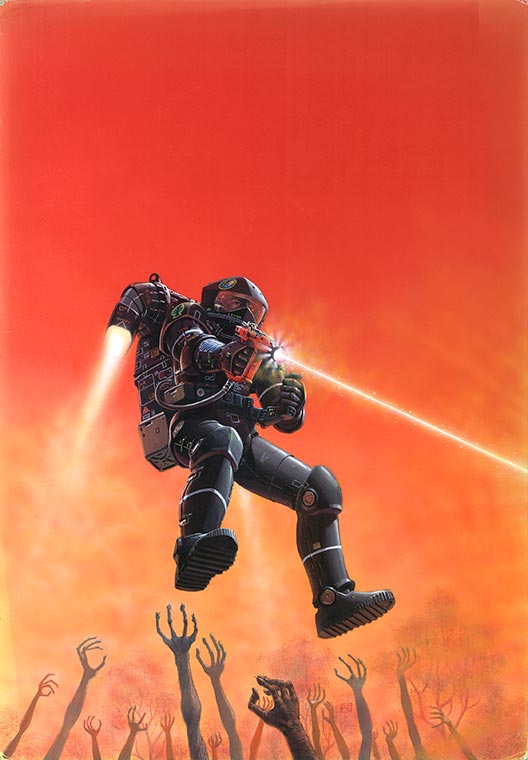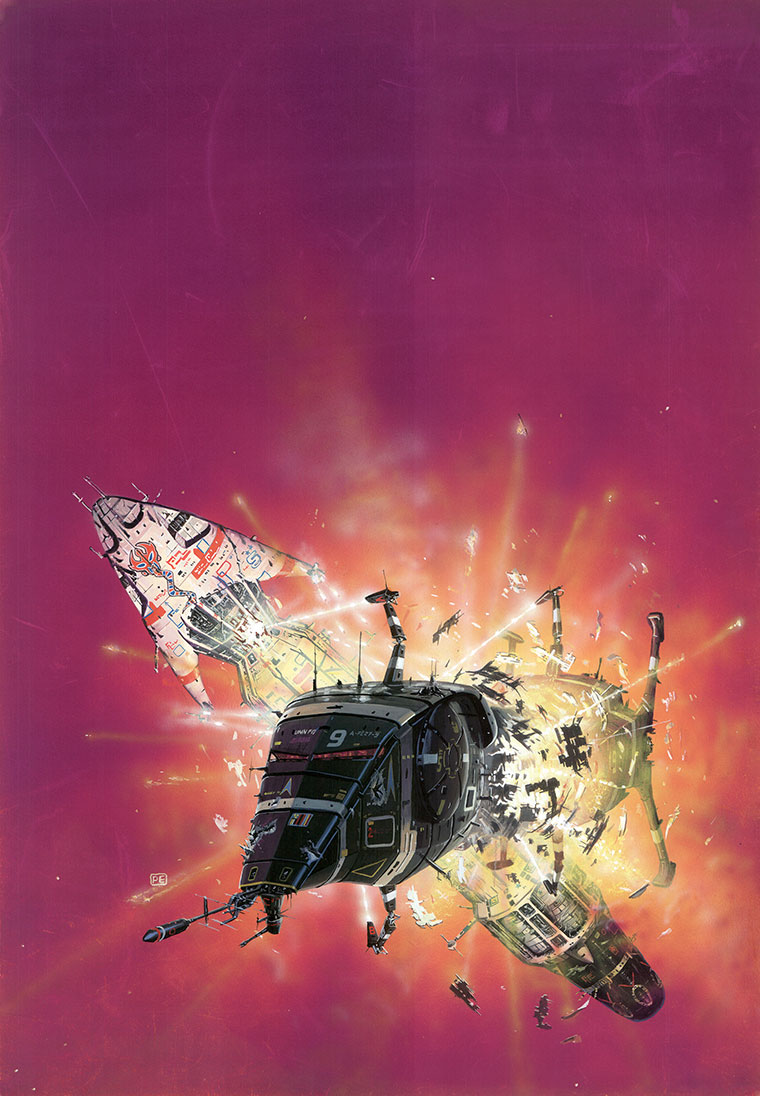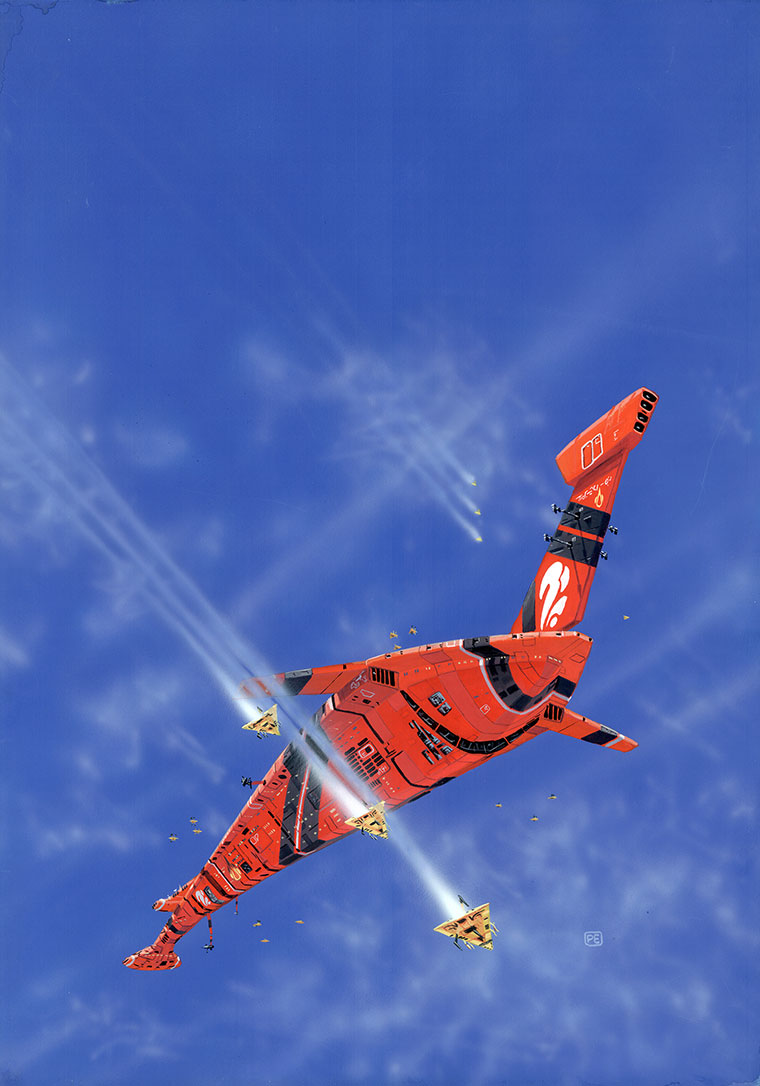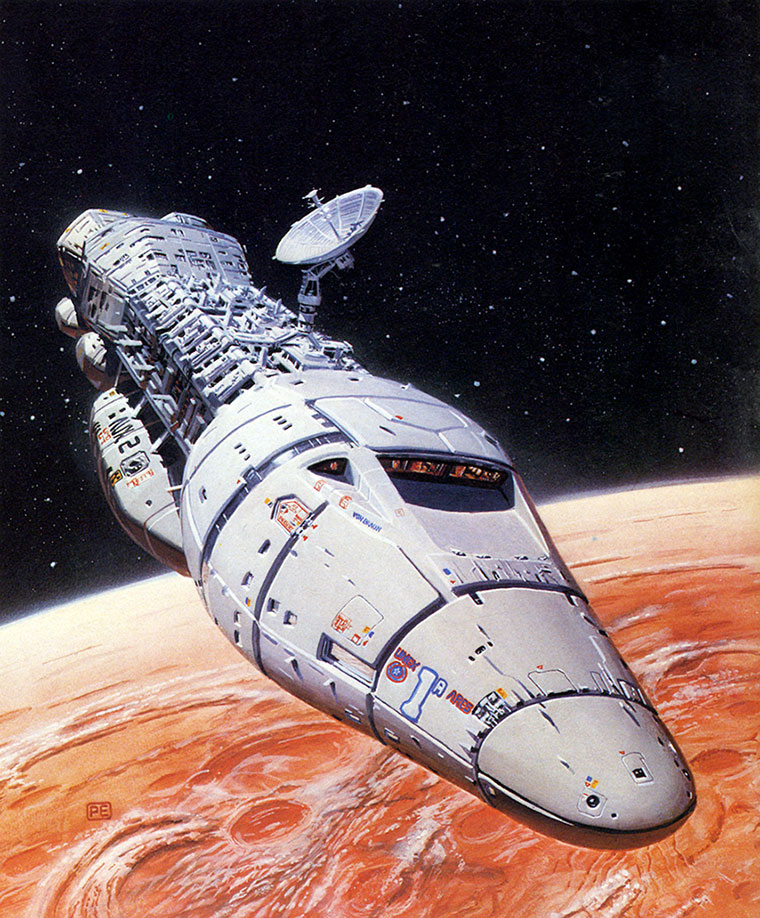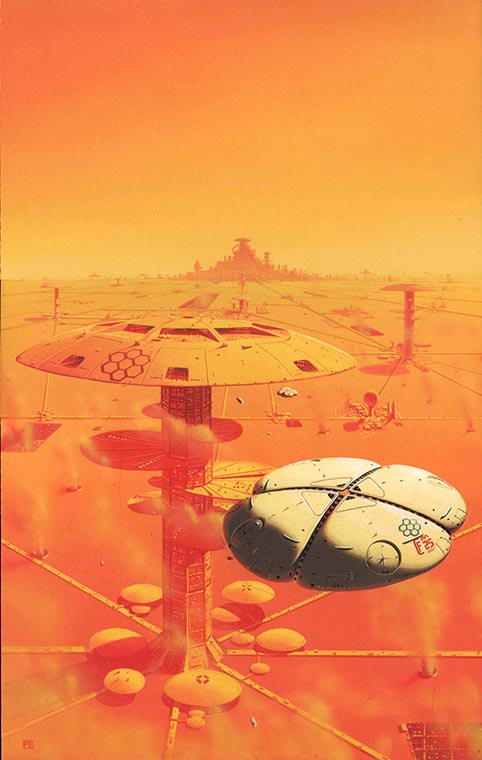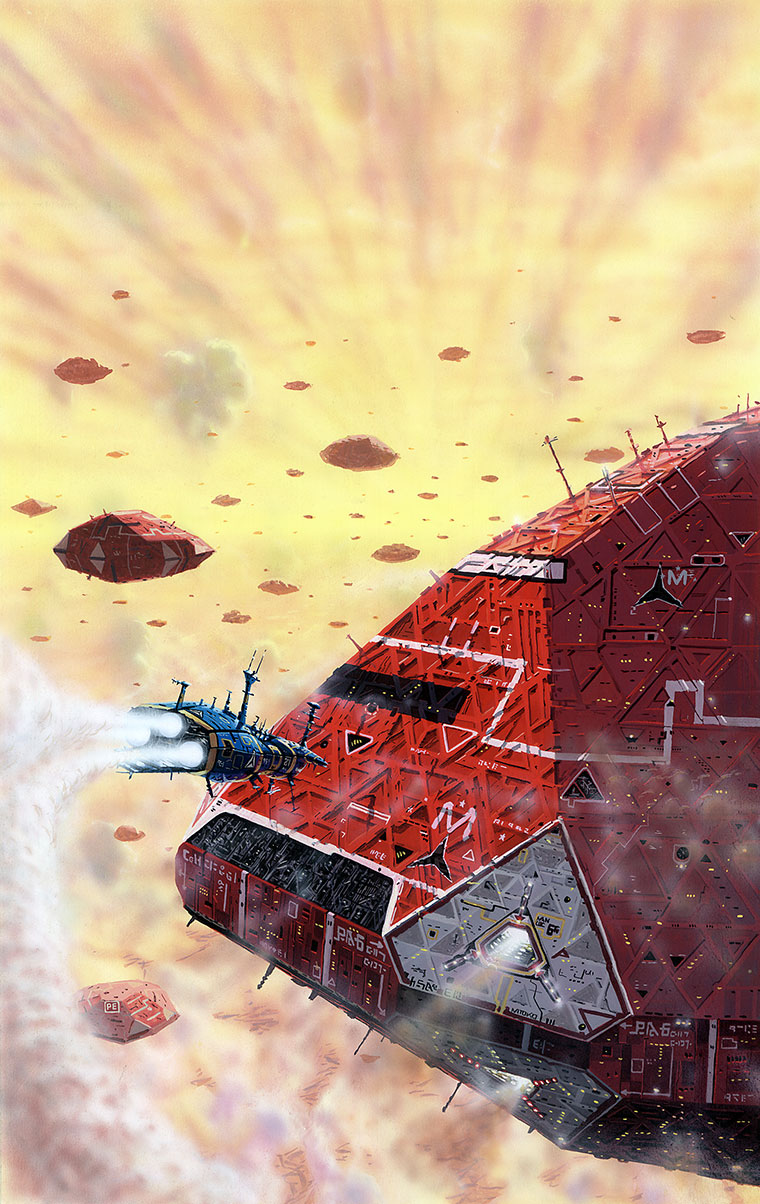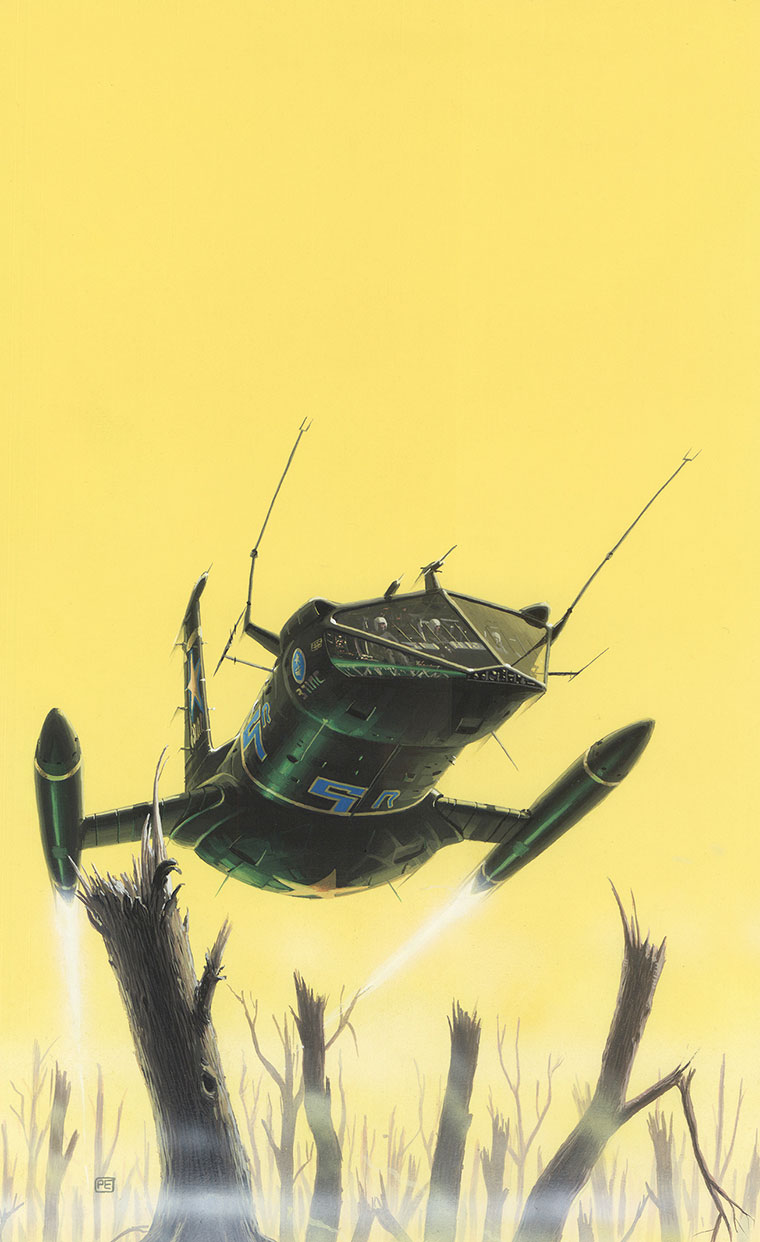Sci-Fi Illustrator Visionary Peter Elson
At its best, science fiction provides design inspiration and a powerful means of looking ahead toward possible futures. The term "science faction" refers to things once represented in science fiction that have actually come into existence. I gave a TEDx Talk a while back exploring how the phenomenon of "science faction" can inspire us as we design for the future of education.
My first encounter with science fiction was during Christmas of 1979. I was twelve and still reeling from seeing "Star Wars" two years earlier. That Christmas, I received "Great Space Battles" by Stewart Cowley and Charles Herridge. Written with the authority and detail of a history textbook, the richly illustrated stories of future space exploration and conflicts captured my imagination.
For hours, I studied and tried to replicate the exquisite details of Peter Elson’s work and others in my work. Through attempting to replicate their masterpieces, I learned about light sources, shadow play, proportions, shading, perspective, implied materiality, and aspects of physics. Last but certainly not least, I learned about the art of applying" greebles,” or intricate details that make surfaces more exciting and enhance a sense of the scale of objects. I was honored by a local hero artist named David Morris (who went on to work at Industrial Light and Magic) when he noted how well I applied greebles. That early praise of my drawings, along with supportive parents and an excellent elementary school Art teacher named Ms. Tilson, helped build my creative confidence. Through studying Peter Elson’s work, I learned the power of imagination to take us to new places.
Below are a few early inspirations from Peter Elson. To take a closer look at Elson's work, visit: www.peterelson.co.uk
Operation Ares by Peter Elson
